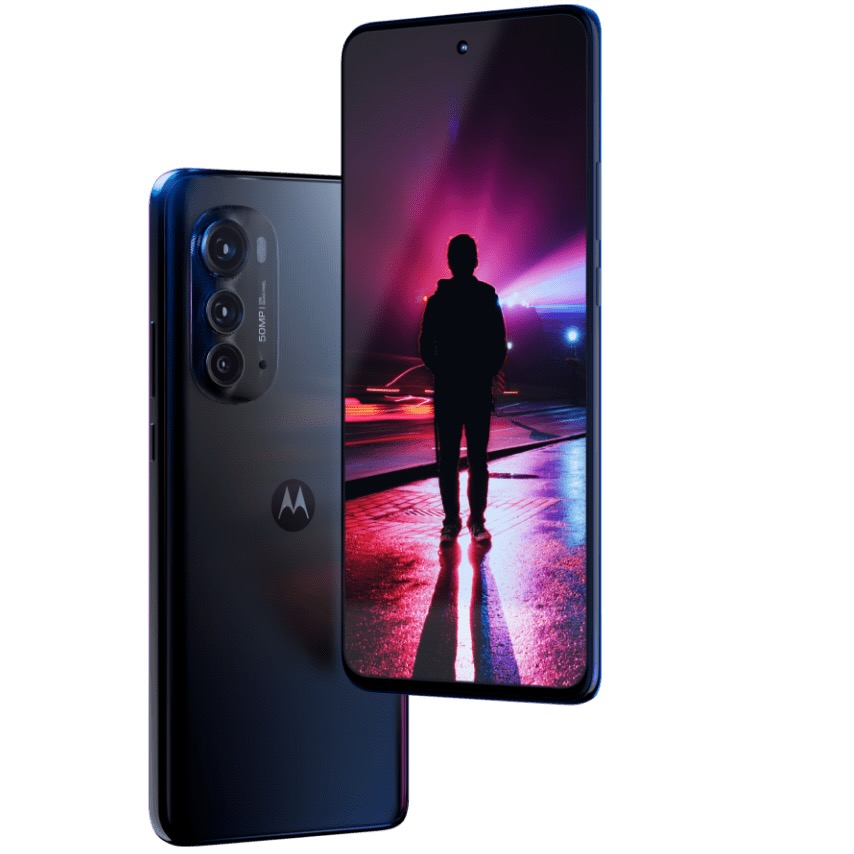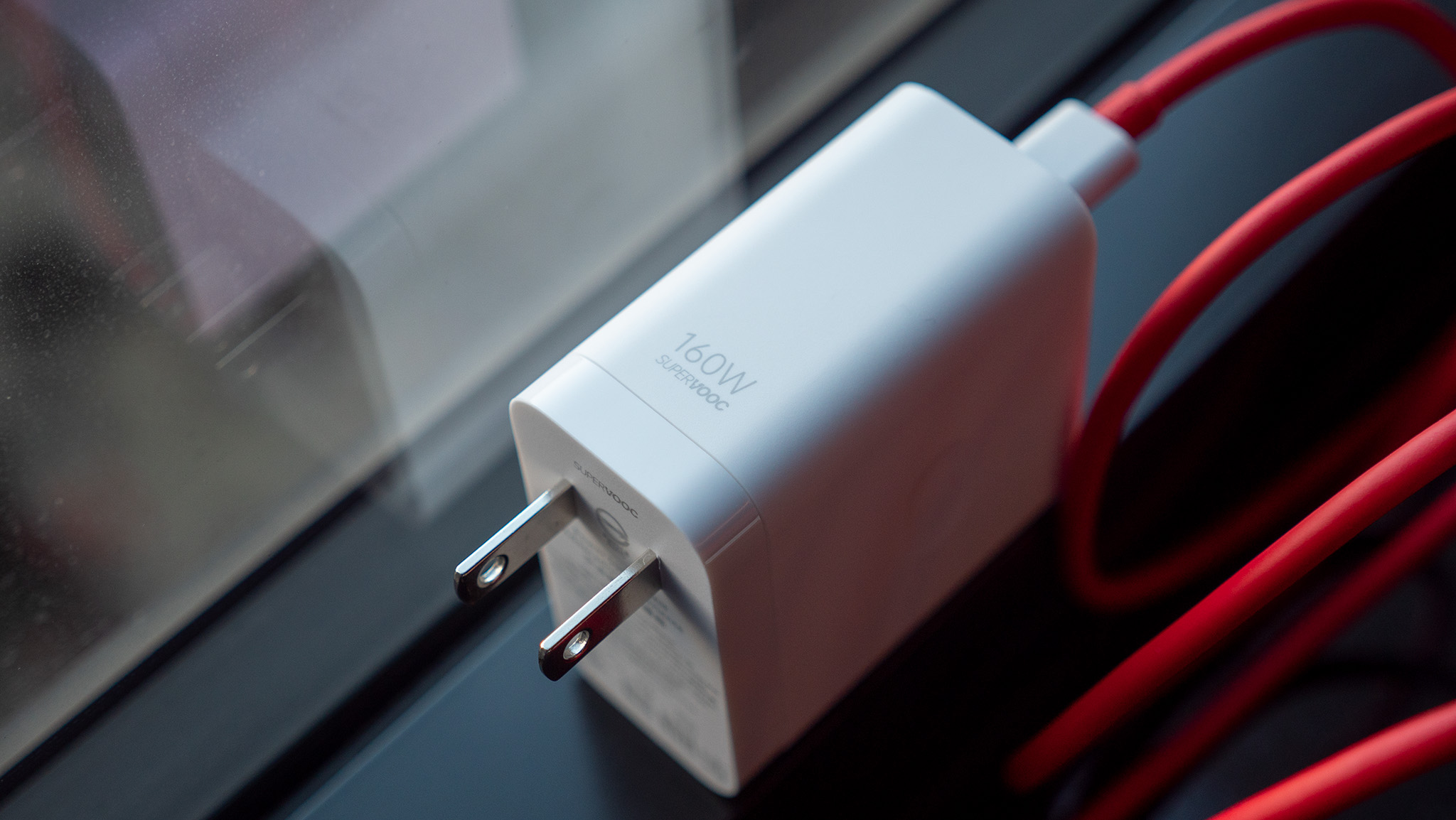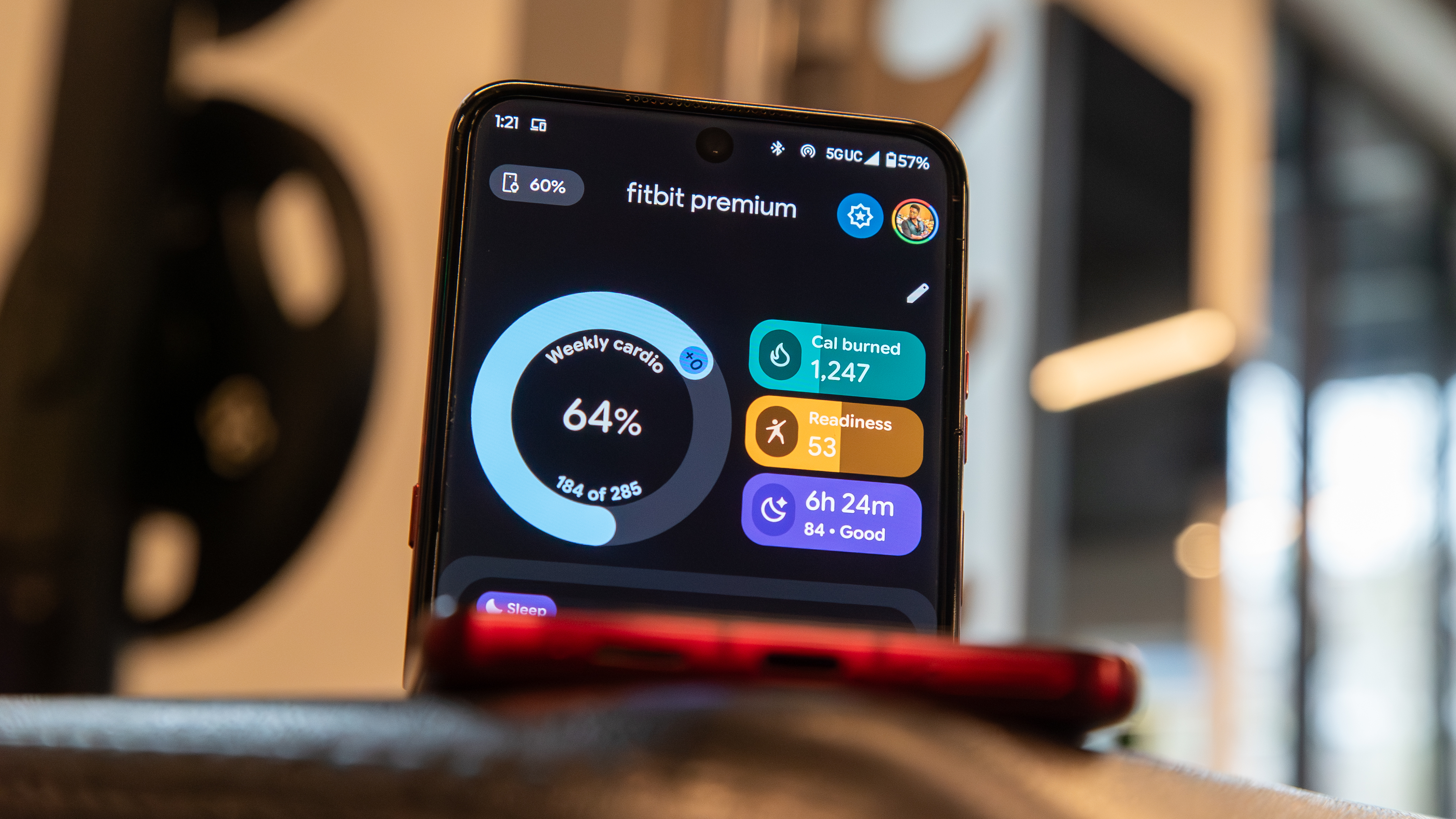Motorola Edge (2022) vs. OnePlus 10T: Which should you buy?
Two mid-range phones with beautiful displays battle for supremacy.

Near-flagship quality
Simply on the strength of the Snapdragon 8+ Gen 1, the OnePlus 10T has one of the best price-to-quality ratios for an Android phone today. It doesn't have game-changing cameras, but the display is excellent, and its charging speed is ridiculous.
Pros
- 120Hz with 1,000Hz touch response
- 125W charging with charger in box
- Snapdragon 8+ Gen 1 chip w/ 16GB option
- Better water/ scratch protection
Cons
- No wireless charging
- Heavier, thicker than Edge
- OxygenOS has issues to resolve

Defying expectations
After years of disappointing mid-range Moto phones, the Motorola Edge (2022) is a solid mid-range phone with two main highlights: the ultra-smooth 144Hz display that lives up to the hype and the 2-day battery life. If you want minimalist software and reliable (if unexciting) performance, this is your phone.
Pros
- Brighter 144Hz display
- Larger battery
- Lighter, thinner than 10T
- Three OS updates
Cons
- Unimpressive cameras
- Only IP52/ GG3 protection
- Disappointing haptics
- Dimensity 1050 performance only average
Both the OnePlus 10T and Motorola Edge (2022) are mid-range phones that make slight concessions compared to their immediate upgrades — the OnePlus 10 Pro and Edge+ — but are otherwise dependable smartphones that don't feel like a compromise to use. The Edge (2022) is much better than its predecessors in several ways, while the 10T brought back OnePlus' traditional late-year refresh in style.
Each phone brings different perks to the table for a similar price, so we're breaking down the Motorola Edge (2022) vs. OnePlus 10T to see which is the better option.
Motorola Edge (2022) vs. OnePlus 10T: Design and displays

Because the OnePlus 10T is a downgraded spin-off of the OnePlus 10 Pro, it mimics the look of the more expensive flagship in most ways. It has a textured glass back with rounded edges and a decently thick and heavy design. At 6.7 inches, it's not a phone most people will want to use one-handed; but that bulk comes with a powerful processor.
Ultimately, the OnePlus 10T makes more of a fashion statement with its two attractive color options. It misses the alert slider of the 10 Pro, but OnePlus told us its absence left room for a new 360-degree antenna for better connectivity, which we appreciated.
The Motorola Edge (2022) couldn't be more different. Although its display is just 0.1 inches smaller, it measures 33.5g less and 0.55mm skinnier with a cheap plastic build. That's literally how our reviewer described it: "This is a cheaply-built phone." That includes the "atrocious haptic motors" that can't keep up with your taps, which the OnePlus 10T doesn't have any issues with.
Neither phone is fully dust- or water-resistant, but OnePlus does win for its IP rating (IP54 vs. IP52), which means it can handle splashes and sprays, while the Edge (2022) can only handle dripping water. And the 10T's Gorilla Glass 5 protection easily beats the Gorilla Glass 3 shield on the Edge.

The display is where both phones stand out. The OnePlus 10T doesn't have an LTPO display like the Pro, but it still hits 120Hz, dipping to 90Hz or 60Hz when appropriate. And the Motorola Edge (2022) jumps to an industry-leading 144Hz and can dip as low as 48Hz.
Get the latest news from Android Central, your trusted companion in the world of Android
Our reviewer called the Edge display "gorgeous" and "a feast for the eyes," while the OnePlus 10T display is so comparable to the OnePlus 10 Pro that you can't notice the difference in "real-world usage." Unlike the big gap between the Pixel 6a and Motorola Edge, these two phones are close enough that choosing the 10T won't feel like as much of a downgrade.
In terms of brightness, the OnePlus 10T has a maximum brightness of 950 nits but fell closer to 750 nits in our Future Labs tests, which is solid but not ground-breaking for this price range. On the other hand, the Motorola Edge (2022) actually hit 995 nits with adaptive brightness in our tests, which is very respectable.
And we loved both in-display fingerprint sensors in our tests: The OnePlus 10T sensor "continues to be simply excellent," while the Edge (2022) sensor has an awesome software feature that lets you drag a notification icon into the fingerprint sensor to open that app from the launch screen, which we found "incredibly intuitive."
Motorola Edge (2022) vs. OnePlus 10T: Hardware, performance, and battery life

For just $50 more than the Edge 2022, you get a considerable performance boost with the OnePlus 10T courtesy of the Snapdragon 8+ Gen 1 — the best non-Apple chip available today. It's as fast as the non-Plus chip released earlier this year but with much better energy efficiency to remove the throttling and overheating issues on the Galaxy S22 series.
We tested the 16GB model, which hit 1025/3476 in Geekbench 5 benchmarks (via Future Labs), which crushes the 751/2193 results we got with the Edge. The same applied for graphical results with 3DMark, since the OnePlus 10T could max out while the Edge (2022) struggled to perform. In practice, you can enjoy popular Android games like Fortnite or Call of Duty Mobile without stuttering or slowdowns.
It's not a fair comparison since most people will buy the 10T model with half the RAM. But even with the 8GB model, you should still get similarly lopsided results, as Motorola's MediaTek Dimensity 1050 chip just can't keep up with the 8+ Gen 1. It's a mid-range chip against a flagship chip. We found the Edge, which takes full advantage of the 144Hz display for simple social media apps, struggled to produce fast refresh rates with popular gaming apps.
| Header Cell - Column 0 | OnePlus 10T | Motorola Edge (2022) |
|---|---|---|
| Chipset | Qualcomm Snapdragon 8+ Gen 1 | MediaTek Dimensity 1050 |
| Memory | 8GB/16GB | 6GB/8GB |
| Storage | 128GB/256GB | 128GB/256GB |
| Display | 6.7-inch AMOLED, 2412x1080 resolution (394 ppi), 120Hz, HDR10+, Gorilla Glass 5, 1,000Hz touch response | 6.6-inch OLED, 2400 x 1080 resolution (399ppi), 144Hz, HDR10+, 360Hz touch sampling rate, Gorilla Glass 3 |
| Rear Camera 1 | Sony IMX766,50MP, ƒ/1.8, 1.0μm pixel size, OIS, 4K video @ 30/60FPS, 1089P @ 240FPS super slow-mo video | 50MP wide-angle, f/1.8, 2.0μm, OIS, Quad Pixel, Omni-directional PDAF |
| Rear Camera 2 | 8MP, ƒ/2.2, 1.12μm pixel size, 119.9-degree FoV, OIS, 1080P video @ 30FPS | 13MP ultrawide, 120° FOV, Macro Vision |
| Front Camera | 16MP, ƒ/2.4, 1.0μm pixel size, 1080p video @ 30FPS | 32MP, f/2.45, 1.4μm, Quad Pixel |
| Battery | 4,800mAh | 5,000mAh |
| Charging | 125W SUPERVOOC wired charging, no wireless charging | TurboPower 30W wired, 15W wireless, 5W reverse wireless |
| Dimensions | 163 x 75.37 x 8.75mm | 160.9 x 74.2 x 8.2mm |
| Weight | 203.5g | 170g |
| Water/dust protection | IP54 | IP52 |
| Security | In-screen fingerprint sensor, single camera face unlock | In-screen fingerprint sensor |
| Colors | Moonstone Black, Jade Green | Mineral Gray |
| OS / Updates | Android 12 with OxygenOS 12.1; three OS updates to Android 15, four years of security updates | Android 12; three OS updates to Android 15, four years of security updates |
In terms of battery life, the Motorola Edge can easily last two days with light usage, though not if you're regularly using apps that demand 120Hz or 144Hz scrolling. But the OnePlus 10T is also quite efficient, to the point that our reviewer said it "kept [him] from worrying about battery life at all."
In Future's battery stress tests, both phones were remarkably similar at 60Hz, lasting a little under 11 hours each. But while the OnePlus 10T lasted just as long at 120Hz, the Edge (2022) only lasted about 9 hours at 144Hz. That's perfectly reasonable but a useful reminder that the Dimensity chip isn't necessarily built to last forever when it is fully clocked.

Once your phone battery dips low, however, the OnePlus 10T is the phone you want to have. With the charger bundled into the box, you can reach 100% power in 20 minutes because it supports 125W charging. OnePlus excels at fast-charging phones, and it's a great perk if you're in a hurry and just need to top your dead phone off for a few minutes.
Motorola Edge (2022) charging isn't bad, but you'll need your own 30W-capable charger since it doesn't come in the box. And it'll take closer to 90 minutes to fill it back to capacity. But it does have wireless charging capabilities, something the OnePlus 10T lacks.
Both phones came with Android 12 out of the box and will eventually get Android 15, along with four years of security updates through 2026. Motorola always has some neat software tricks that we like, and we appreciate that the Edge will finally get more than two OS updates — a consistent problem with past Moto phones.
We have some concerns about the future of OxygenOS due to its confusing relationship with ColorOS, while Motorola gives you a more stock experience but is less reliable for speedy updates. It's hard to say which is the safer buy.
Motorola Edge (2022) vs. OnePlus 10T: Cameras
The OnePlus 10T isn't the best camera phone in the world, and it lacks the Hasselblad branding of past OnePlus phones that symbolizes quality with a lot of users. The ultra-wide or macro cameras underwhelmed us, too. But simply for the 50MP primary camera, we generally enjoyed taking photos with the OnePlus 10T, which captures plenty of fine details in low-light scenarios — even if it falls short of the Pixel 6a in camera quality.
We've included a sampling of OnePlus 10T photos below:








As for the Motorola Edge (2022) cameras, we found them very average in our tests. It also has an underwhelming ultrawide camera, though we actually like its macro camera for close-ups. But the "extremely muted and unrealistic" colors, poor details with HDR photos, and frustrating shutter lag hurt your chance of capturing beautiful memories, even with the primary sensor. We've included a few sample photos below.











Motorola Edge (2022) vs. OnePlus 10T: Which should you buy?
The Motorola Edge (2022) was a more tempting buy during its first month when it had a promo price of $499. But now, just $50 less than the OnePlus 10T, it's a bit expensive for what it offers. You're mainly paying for the two-day battery life and 144Hz display at the expense of the cameras and the mid-range performance.
The OnePlus 10T is a near-flagship phone with slightly better camera quality, a slightly worse display, and far superior performance. The latter is why we'd recommend the 10T over the Edge, as it will make a big difference for power users over time. Plus, the extremely fast charging more than compensates for the slightly shorter battery life.
We enjoyed using both phones. But there's a reason only the OnePlus 10T is on our list of the best Android phones.

You can't go wrong with the OnePlus 10T, simply because of its speedy Snapdragon chip with upgraded cooling system, so it runs the most demanding games at 120Hz without overheating. And then it recharges to full in under a half hour.

Not even the most powerful 2022 flagships can hit 144Hz like the Motorola Edge (2022). It has mid-range performance, but will consistently last you for days at a time per charge.

Michael is Android Central's resident expert on wearables and fitness. Before joining Android Central, he freelanced for years at Techradar, Wareable, Windows Central, and Digital Trends. Channeling his love of running, he established himself as an expert on fitness watches, testing and reviewing models from Garmin, Fitbit, Samsung, Apple, COROS, Polar, Amazfit, Suunto, and more.
